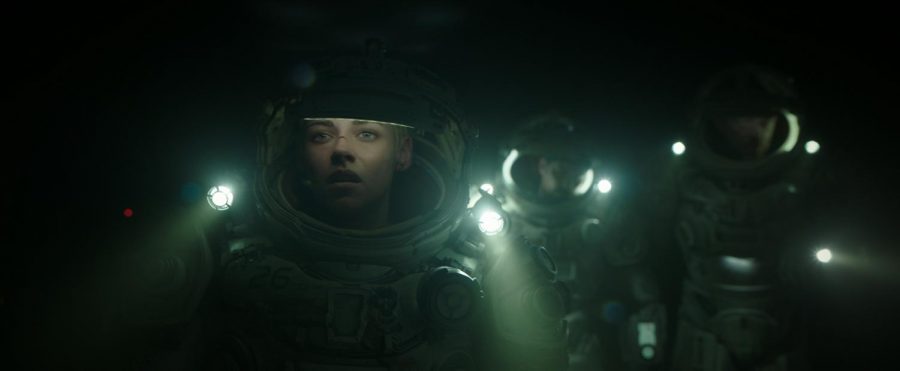“Underwater” Sinks Under the Surface
While the new movie “Underwater” intrigues viewers with a unique plot, it’s lack of clarification at many points makes it hard for viewers to completely understand the storyline.
The creepy and unsettling movie “Underwater” presents moviegoers with an enticing concept they haven’t seen before. When Kepler Station, an underwater drilling station, suffers the effects of an earthquake, Norah Price, played by Kristen Stewart, and fellow crew members must rush to make an escape to the surface before it’s too late and they’re attacked by the mysterious creatures that are lurking below. Viewers are on the edge of their seat as they follow along Norah and crew members Captain Lucien, played by Vincent Cassel, Paul Abel played by T.J. Miller, Emily Haversham, played by Jessica Henwick, Liam Smith played by John Gallagher Jr. and Rodrigo Nagenda, played by Mamoudou Athie on the mission of a lifetime. In order to make it out alive, the members must travel a mile underwater in order to make it to Roebuck Station, the main drilling site. Along the journey the crew encounters many setbacks as the destruction demolishes their equipment and the creatures below begin their attacks.
We drilled to the bottom of the ocean, and we don't know what came up. See #Underwater now playing in theaters! Get tickets: https://t.co/1dUKpqgZa5 pic.twitter.com/1kdMNwCQs7
— Underwater (@UnderwaterMovie) January 12, 2020
However, from the very beginning, the storyline begins to become frantic, making it very hard for viewers to completely understand what is going on. Viewers may find themselves spending more time trying to figure out where the characters are in their escape mission rather than actually watching the movie. The storyline moves very quickly and doesn’t allow viewers to completely process and understand what happened in the previous scene. The plot is unique and has potential, but a lack of clarification makes it hard to enjoy.
Though “Underwater” stays pretty confusing throughout, it does an exceptional job of making viewers feel an emotional connection to the characters. As their journey gets harder and harder, viewers begin to learn more personal information about the characters. Whether it’s insight into the Captain’s young daughter or Paul’s stuffed bunny he carries wherever he goes, viewers begin to learn about each crew member’s motivation to escape. All of the characters’ likability makes it easy to root for the crew members to find their final destination and to escape the terrors they’re experiencing.
The movie starts to be more clear and get more thrilling towards the end when the crew comes within close range to Roebuck Station, their final destination before they can be sent to the surface in escape pods. At this point, the plot hits its climax, as the remaining members of the crew rush to escape before it’s too late. This part of the movie was the most enjoyable and was the point in which viewers were completely tuned in.
This point in the movie is also where viewers discover the overarching message of the movie. “Underwater” seems to encourage viewers to take risks and step outside of their comfort zones. Throughout the movie, the crew is seen facing their fears and braving the unknown. This message is especially present one of Norah’s last lines: “stop feeling and start doing.”
While “Underwater” overall had a fascinating plot, provided moments of thrill, hit readers with some terrifying jump scares and constructed an important message, its lack of clarification throughout made it hard to completely understand. If the directors would have slowed down the pace and allowed time for viewers to completely follow the storyline, the experience would have been much more enjoyable. The combination of a unique plot and setting should’ve made the movie a blockbuster, as the only thing remotely comparable is the 1979 film “Alien.” However, instead of rising to the surface, “Underwater” sinks to the bottom as its failure to fully develop its nautical nightmare storyline made the movie unable to fully develop.



